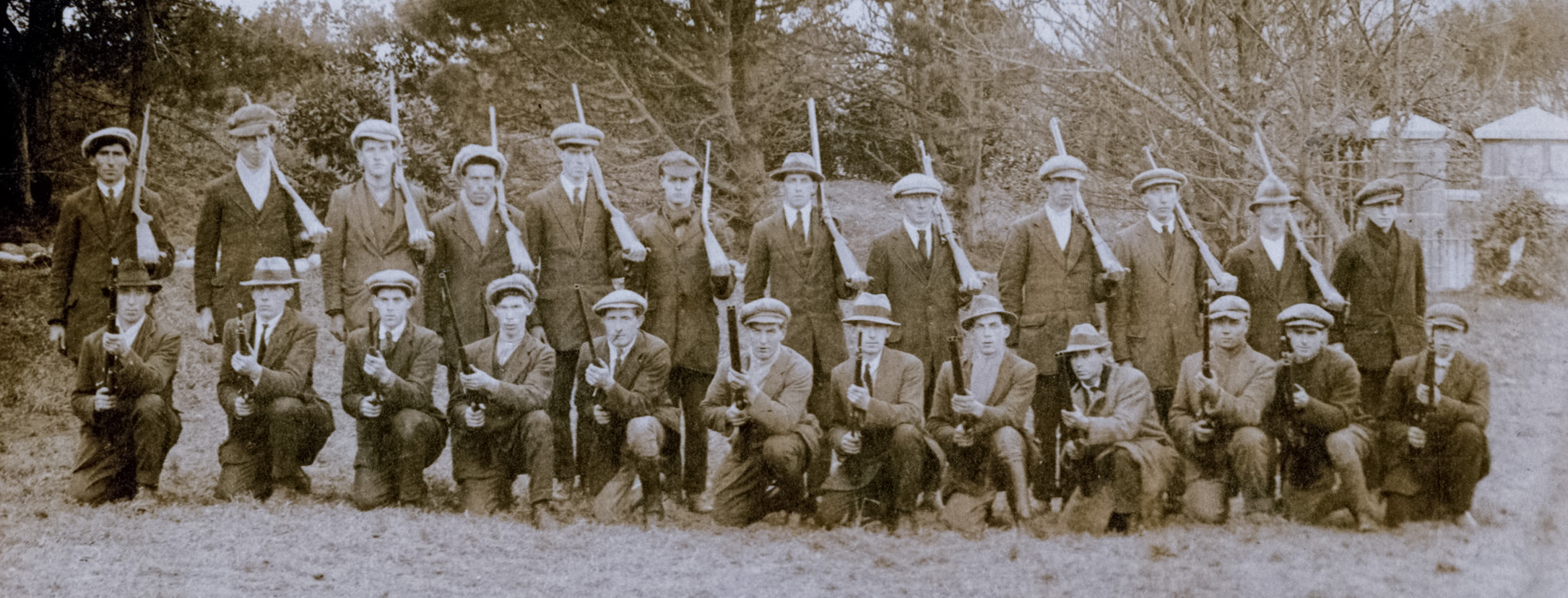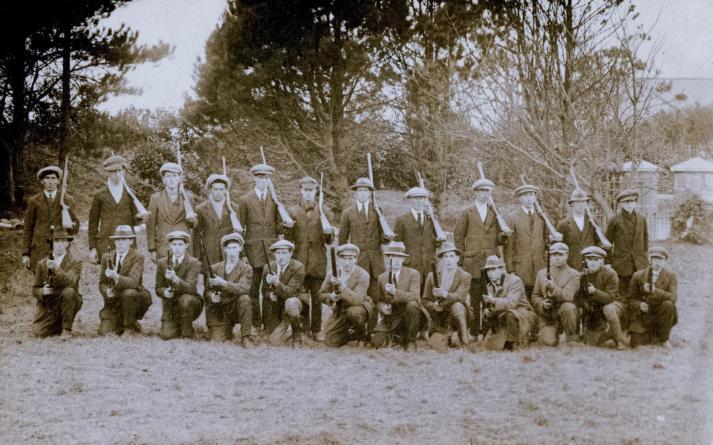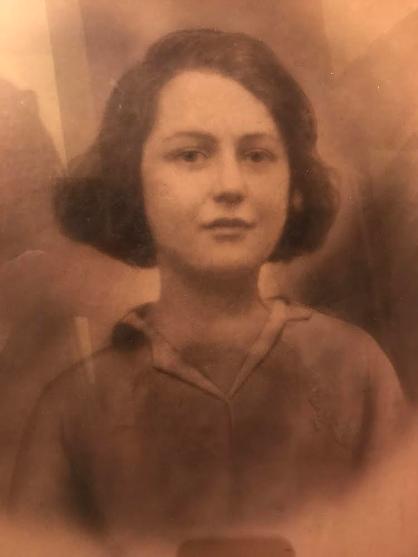Civil War Fatalities in Donegal

The Civil War in Donegal
by Pauric Travers
In his allegorical novel An Druma Mór, Seosamh MacGrianna concludes that not much of the war of independence came to the north-west – ‘ní tháinigh mórán den cogadh go Ros Cuain’. The same could not be said about the Civil War. On the contrary, Michael Hopkinson has suggested that nowhere was the fraternal conflict more bitter and forlorn. The explanation for this transformation is directly related to partition. The influx of seasoned IRA fighters from the south and from across the border added to the volatility of the situation and ensured that Donegal simultaneously experienced a border war and a civil war.
Reaction to the Treaty in Donegal
Reaction to the Anglo-Irish Treaty followed a similar pattern in Donegal to elsewhere. Clergy and press largely endorsed its terms despite reservations; local authorities and public bodies did likewise. The Sinn Féin comhairle ceantair in each of the Donegal constituencies voted overwhelmingly in favour with significant opposition only in the west. The County Council endorsed a motion calling on Donegal TDs to support the Treaty and four of the six Sinn Féin TDs did so. Within the IRA, there was some opposition among the rank and file but a majority of members of the 1st Northern Division ultimately declared loyalty to the Free State. In this, the role of Commandant Joe Sweeney from west Donegal was influential. One officer claimed that but for Sweeney’s influence, ‘the whole division would undoubtedly have gone irregular’.
![First page of the minutes of a special meeting of the Donegal County Council on 31 December 1921 during which the Treaty was discussed. [Image Courtesy of Donegal County Archives] First page of the minutes of a special meeting of the Donegal County Council on 31 December 1921 during which the Treaty was discussed. [Image Courtesy of Donegal County Archives]](/en/media/projectsandcentres/irishrevolution/Fig.1DCCmiinsWardletterafterTreatysigned,30Sec1921-608x992.jpg)
Fig. 1 First page of the minutes of a special meeting of the Donegal County Council on 31 December 1921 during which the Treaty was discussed. Sinn Féin TD for South Donegal, P.J. Ward declined to ‘summons’ to attend, as Dáil Deputies were precluded from taking part in any public discussions about the Treaty until the decision of the Dáil was announced. Initially opposed to the Treaty, Ward had returned to Donegal during the Christmas recess in the Treaty Debates and was swayed by his constituents' support for the agreement. As he told the Dáil in January: ‘they are war-worn; they have come through a strenuous fight, and they want peace’. Donegal County Council approved the Treaty in January. [Image Courtesy of Donegal County Archives]
If partition played little part in the Treaty debates, the opposite was true of the months that followed when the border and the plight of northern nationalists brought Donegal centre stage nationally. Following the Army Convention in late March which entrenched the split in the IRA, Commandant Sean Lehane went to Cork and Kerry to recruit volunteers to lead a northern offensive against partition. His forces, which were based at Raphoe in east Donegal, were supplemented by local activists and IRA members who had fled the six counties. In early May their first major engagement sparked two confrontations with National Army troops which marked the beginning of the Civil War in Donegal, almost two months before the formal commencement of hostilities nationally.

Fig. 2 Members of the 4th Brigade, 1st Northern Division during the War of Independence [Joseph Murray Papers. Image Courtesy of Donegal County Archives]
Cross Border Attacks
Lehane led one part of his column in a cross-border attack into Derry while his second-in-command, Charlie Daly, led a second raiding party into north Tyrone. Both raids proved largely abortive, but a third sortie had serious consequences. Lehane sent a small party to raid the Belfast bank in Buncrana, ostensibly as part of the Belfast boycott but also with the intention of securing much-needed funds. While they were in the bank, their presence was detected, and they were confronted by troops from the local barracks. In the gun battle that ensued two bystanders were fatally wounded: Essie Fletcher aged nine died instantly and Mary Ellen Kavanagh aged nineteen died later. John Kavanagh, Mary Ellen’s father was wounded in the hand, apparently trying to protect his daughter. Two of the bank raiders, one National Army soldier and three other locals were injured.
The affray had an even deadlier postscript. In response to events at Buncrana a large party of National Army troops led by Tom Glennon were despatched from Drumboe Castle. En route they encountered Lehane’s column at Newtowncunningham. In the ensuing engagement, four National Army soldiers were killed. One side claimed that what happened was a pre-planned ambush, the other that Glennon had fired first. These killings greatly increased the animosity between the two sides.
The Newtowncunningham incident was unexpected because it had been agreed secretly that both sides would collaborate on the northern offensive and arms were shipped to Donegal for that purpose. Despite mutual distrust, there is some evidence of tacit cooperation in the battle of the Pettigo-Belleek triangle in late May and early June. This involved large scale engagement with Ulster Special Constabulary and later British Troops. Ultimately the use of British artillery forced the IRA to withdraw but not before the deaths of four soldiers attached, according to their Military Service Pension files, to the National Army.
Formal Commencement of Civil War
The attack on the Four Courts and the formal commencement of civil war nationally took both sides in Donegal unawares but Joe Sweeney moved quickly to take control of the spine of the county, an action which determined the shape of the war in Donegal. His troops seized Finner camp, the military barracks in Ballyshannon, Buncrana and Bridgend and Ballymacool House in Letterkeny. The loss of Finner was significant. With a permanent checkpoint on the bridge across the Erne at Ballyshannon, there was no safe entry to the county for reinforcements for the anti-Treaty side. Hemmed-in in east Donegal between the National Army and the border, they were forced to evacuate in turn Lifford, Castlefinn, Inch and Raphoe. Hoping to regroup, they made their headquarters at Glenveagh Castkle in the west. Eithne Coyle and members of Cumann na mBan who had opposed the Treaty established a field hospital close by.
Efforts to secure a ceasefire
In early July an unsuccessful attempt was made to arrange a ceasefire. Joe Sweeney met Charlie Daly at Church Hill. Reflecting his military strength, Sweeney offered to allow local IRA to return to their homes; those from the south could leave Donegal with arms and transport; and those from across the border would be given refuge and safe passage on condition that they surrendered their arms. This offer was rejected by Daly who proposed that both sides should agree to refrain from attacking each other and that the northern offensive should be allowed resume unhindered. Within days two National Army soldiers were killed in an ambush at Drumkeen.
Guerrilla tactics
Of necessity the anti-Treaty side was forced to resort to guerrilla tactics. In late July, they withdrew from Glenveagh and began a peripatetic campaign. The column was divided into two groups, one operating in east Donegal and one in the west. There was limited activity in the south. The Western Division of the IRA attempted to relieve the pressure by moving north through Sligo and Leitrim and attacking the National Army around Bundoran, but this was repulsed by mid-September. By then both Daly and Lehane had become dispirited. Their reason for being in Donegal - the northern offensive - had effectively collapsed. They complained in despatches that they were ‘greatly outnumbered’, lacked food and equipment and faced ‘a hostile civil population and a hostile clergy’. The column had originally numbered approximately 115 men on active service. By September this had been reduced to twenty-five men mostly from outside the county. At that point, the strength of the National Army forces in barracks was estimated at 2,700.
By late Autumn, the Civil War had all but petered out in Donegal. Lehane was instructed to withdraw from the county. However, before that could be arranged, the group led by Charlie Daly were intercepted and arrested on their way to a rendezvous with Lehane’s men. The latter made their escape from the county by way of a boat commandeered at Donegal town.
The Drumboe executions
The Drumboe executions on 14 March 1923 represented a gratuitous denouement to the Civil War in Donegal. Charlie Daly and those arrested with him were tried by court martial and sentenced to death in January but with the bulk of republican forces having already withdrawn, it was expected that the sentence would not be implemented. However, the killing of Captain Bernard Cannon in an apparent attack on Creeslough barracks changed the situation. The circumstances of Cannon’s death are disputed. Republicans insisted that none of their forces were in the area and suggested that Cannon was killed by a colleague. A third not implausible explanation claims that shots were fired at the barrack by some villagers in response to earlier arrests at the monthly fair.
Whatever the truth of the matter, Commandant Sweeney was instructed by GHQ that Charlie Daly, Daniel Enright, and Timothy O’Sullivan, all from Kerry and Sean Larkin from Derry were to be shot in reprisal. Despite appeals for clemency, the executions proceeded. Not long before his death, Daly had written to his mother saying that he would prefer to be killed by B specials than fire a shot at ‘our own fellows’. His former friend Joe Sweeney would probably have shared those sentiments. He privately disagreed with the executions but felt compelled to follow orders: ‘It is hard to describe war among brothers. It was fierce and it was atrocious.’
-773x652.jpg)
Fig. 3 Memorial card for the ‘Drumboe Martyrs’: Charlie Daly, Timothy O’Sullivan, Daniel Enright and Seán Larkin, who were executed in March 1923. [Image Courtesy of Donegal County Archives]
Leaving Donegal
Even before the cessation of hostilities nationwide in May, large scale emigration has resumed from Donegal. To the victor the spoils: those who had supported the Free State had the opportunity of jobs in the army and the garda siochána; those who did not had to bide their time or emigrate. Prominent among the emigrants were considerable numbers of disillusioned republicans, women as well as men who had seen in the Irish revolution an opportunity to end the scourge of poverty and landlessness. At the end of the Civil War, the intelligence officer of the 1st Northern Division of the IRA reported that the most reliable Volunteers were emigrating as were practically all the ex-prisoners. The same was true of Cumann na mBan. Also included in the migrant ranks were not insubstantial numbers of Donegal Protestants who bore some of the brunt of the war in terms of harassment and damage to property.
New Research
The research by Andy Bielenberg and John Dorney provides comprehensive data on civil war fatalities in Donegal and is a significant contribution to our understanding. It shows that there were twenty-four fatalities in Donegal in the period between 28 June 1922 and 24 May 1923. Of these, nine were National Army soldiers, of whom five were killed in action or died of wounds while four were accidental deaths. Ten were IRA, of whom four were killed in action or died of wounds, four were executed and one was an accidental death. Five were civilians, of whom two died in accidents. The youngest fatality was three years old and the oldest was seventy – both of these were civilians. The average age of the combatant fatalities was twenty-four. A majority of the military casualties took place in the first month of the war which supports the view that the war in Donegal was fizzling out by September 1922.
As the data base records fatalities between 28 June 1922 and 24 May 1923, it does not include the deaths at Buncrana and Newtowncunningham in May which marked the beginning of the Civil War in Donegal or the six other military casualties inflicted by the British army or Ulster Special Constabulary in the same period.
The case of John Connolly (eighteen) who died on 11 July 1922 exemplifies how compiling a civil war database requires negotiation of sometimes conflicting eyewitness accounts, local knowledge, newspaper reports and official documents. Connolly was born in Kinloch in Leitrim, but the family moved the short distance to Bundoran when he was a child. During the War of Independence, he was attached to the Donegal fourth brigade which operated in south Donegal and adjoining parts of Fermanagh, and Leitrim. In the Civil War he was a private in the 1st Brigade, 3rd Western Division. He was fatally wounded when his commanding officer’s rifle accidentally discharged. The body was brought initially to Tullaghan in Leitrim and then to Bundoran, and the death was registered in Ballyshannon. In the relevant file in the Military Service Pensions Collection, multiple locations in Donegal, Leitrim and Sligo are cited as the place of death but Francis Ward, the officer involved, ‘from incontrovertible knowledge’ named Castlegarron, near Grange, County Sligo, as the location, discreetly adding that Connolly was ‘on outpost duty’ at the time. Other eyewitness accounts confirm that the accident took place in Harron’s public house in Castlegarron.
-908x818.jpg)
Fig. 4 Map showing the location and affiliation of the twenty-four combatant and civilian fatalities in County Donegal between 28 June 1922 and 24 May 1923
Fatality Profiles
Civilian: Mary Ellen Kavanagh (1903-22) the fifth of fifteen children. Her father John was a cattle- dealer and her mother Annie (nee Lynch) ran a grocery shop on Main Street. Her mother died in 1919, three months after the birth of her fifteenth child. Mary Ellen was a member of the Bishop McGinn branch of the Irish National Foresters, the nationalist friendly society. She was shot outside her home on 4 May 1922 along with her neighbour Esther Fletcher in the gunbattle following the Buncrana bank raid and died in Derry Infirmary three weeks later. Her father was wounded in the hand apparently by the same bullet which killed his daughter.

Fig. 5 Mary Ellen Kavanagh [Courtesy of Noirin Deeney]
National Army: Captain Bernard Cannon (1898-1923) and his twin brother Columb were born at Toome, Lettermacaward, County Donegal in April 1898. Their father had a small farm (less than 10 acres) and his mother ran a grocery shop and post office. Bernard worked in Scotland as a seasonal worker. He became a Captain in the Lettermacaward company of the Irish Volunteers and joined the National Army after the Treaty. He was stationed in Dungloe before being transferred to Creeslough where he was shot on 10 March 1923. His death led directly to the Drumboe executions.
IRA: Commandant Charlie Daly (1896-1923) was born in Castlemaine Co. Kerry. A farmer’s son, he was educated locally and in CBS Tralee. He joined the Irish Volunteers before 1916. After service in Kerry and Cork in the war of independence and a period of imprisonment, he was sent to Tyrone as an IRA organiser, moving to Donegal after partition. He was OC 2nd Northern Division from June 1921 but was replaced in that position after the Treaty split. He then became Vice OC 1st Northern Division IRA and led a sporadic campaign in Donegal, Tyrone and Derry until his arrest in November 1922 and execution as a reprisal at Drumboe on 14 March 1923.
Main Sources
Derry Journal
Donegal Democrat
County Council meetings, Donegal County Archives.
Military Service Pensions Collection, Irish Military Archives
Ernie O’Malley papers, UCD Archives
Brian Anderson, Gone but not forgotten: Donegal’s republican dead, 1900-2000 (Letterkenny, 2022).
Kenneth Griffith & Timothy O’Grady, Curious journey (London, 1982).
Michael Hopkinson, Green against green: the Irish civil war (Dublin, 1988).
James Langton, The forgotten fallen of the Irish civil war, vol. I (Dublin 2019).
Seosamh MacGrianna, An Druma Mór (BAC, 1969).
Liam Ó Duibhir, Donegal and the civil war: the untold story (Cork, 2011).
Pauric Travers, The Irish Revolution, 1912-23: Donegal (Dublin, 2022)
Author’s Bio
Professor Pauric Travers is a historian and educator. His most recent published work is Donegal: the Irish Revolution 1912-23 (Four Courts Press, 2022)




